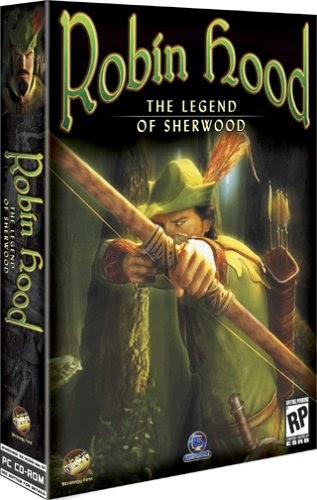
The earliest paintings related to the legend of Robin Hood originate in a partial retelling of some of his legends in Sir Walter Scott’s romantic mediaeval novel Ivanhoe, first published in English in 1820, and in French translation soon afterwards. It is also peculiar in confounding two completely unrelated stories: Clorinda is a Saracen woman warrior drawn from Torquato Tasso’s La Gerusalemme Liberata, first published in 1581, and a key literary heroine in Italian Post-Renaissance art and literature. This coloured engraving of Robin Hood & Clorinda was made in 1783 from an original by John Meheux, by the relatively young William Blake, when he was working primarily as an engraver. However, some of the illustrations made for printed editions of his tales have interesting pedigrees. Robin Hood doesn’t appear to have featured in any fine art painting until the nineteenth century. William Blake (1757-1827), Robin Hood & Clorinda (1783), coloured engraving from original by John Meheux (?1749-1839), further details not known. He has featured in at least thirty movies, been played by Errol Flynn (1938) and by Sean Connery with Audrey Hepburn (1976), and several television series. Robin Hood has been the subject of many illustrated books from 1500 onwards, although I will show only a small selection of more ‘artistic’ illustrations here. Among the friends he defended against attack was Maid Marian, whom he married. His trademark skills were woodcraft and supreme accuracy with the longbow. Under his nickname of Robin Hood, he assembled a group of friends who became known as his Merry Men, who lived in the forest preying on the many ‘bad’ and despotic landowners and nobles, for the benefit of the oppressed poor. They centre on Robert of Locksley, who lived on the edge of Sherwood Forest near Nottingham, England, and was dispossessed of his farm and made an outlaw.
#Robin hood the legend of sherwood art series#
Earliest surviving written accounts are from around 1500, in the form of a series of lengthy ballads which were first printed in Antwerp, and by Wynkyn de Worde in London. The tales of Robin Hood are claimed to date back to around 1200, with the hero dying, by popular account, in 1247. Lady Godiva, which I cover in the next article, is a good example of a short and simple legend with a strongly visual story – she rode naked through the streets of Coventry – which was both highly attractive to the painter, but a tricky motif until the late nineteenth century. I will perhaps return to them on another occasion.

They are also among the most complex legends, with multiple literary versions, some degree of absorption into non-English accounts, and a vast literature. The most popular British legends, even today, remain those of King Arthur, Camelot, and the Knights of the Round Table. For a change, I have chosen two of the best-known British legends which haven’t been formalised in well-known literary works: Robin Hood, and Lady Godiva. There are many legends which have provided the narrative to paintings. Although there is considerable overlap between these two categories of story, and myths and fairy tales, in general a legend is a semi-factual or fictional story about a named and famed figure of the vague past. Last weekend, I looked at the use of fables as the basis for narrative painting, and in doing so mentioned legends.


 0 kommentar(er)
0 kommentar(er)
